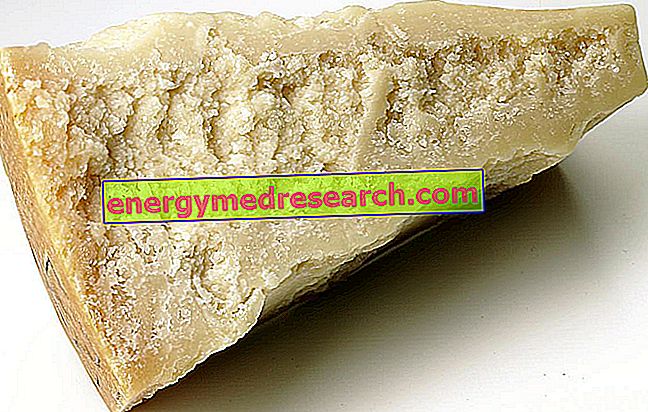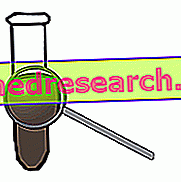Generality
Beer and overweight: introduction
Beer is an alcoholic beverage based on fermented cereal malt, then traditionally flavored with hops.

There are many types of beers, different in color, taste, alcohol content and production method. Many people wonder if the beer is fattening. Being a "non-food" that only provides "empty calories" (later on we will better understand what it means), the answer should be positive. In fact there are all the necessary conditions to define this alcoholic beverage as fattening (even if it is not the only one). They share, at least in part, the same characteristics of the numerous beer beverages such as wine (based on fermented grapes), cider (based on fermented apples), mead (based on fermented honey) etc. They are also more fattening spirits such as spirits (grappa, whiskey, rum, vodka, gin etc.) and liqueurs (bitter herbs, fruit liqueurs, spirits creams etc).
Let's go into more detail.
Nutritional Properties
General beer composition
The most important chemical-nutritional characteristic of beer is that it is a solution of water and ethyl alcohol, in which mainly malt dextrins and some mineral salts are diluted.
Being an alcoholic beverage (the concentration in ethyl alcohol fluctuates, roughly, from 3 to over 10%), its consumption has very significant psychological and physiological effects. In fact, the various concentrations of alcohol in the human body have measurable and mutable repercussions.
Beer contains phenolic acids, including 4-hydroxyphenylacetic acid, vanillic acid, caffeic acid, syringic acid, p-coumaric acid, ferulic acid and synapic acid. Experiments based on alkaline hydrolysis show that most of the phenolic acids are present as bound forms; only a small part of them can be detected as free compounds.
Hop characteristics
Hops, therefore also beer, contains 8-prenylnaringenin, a potent phytoestrogen. Also present are: myrcene, humulene, xanthumol, isoxantumolol, mircenol, linalool, tannins, resins and 2M2B alcohol (tert-amyl alcohol).
Characteristics of barley malt
Barley, in the form of malt, contains condensed tannins, prodelfinidine (proanthocyanidins) B3, B9 and C2.
Tryptophol, tyrosol and phenylethanol are aromatic superior alcohols present in beer as secondary products of alcoholic fermentation (congeners) of Saccharomyces cerevisiae .
Nutritional composition of beer
Below is a small table that summarizes the main chemical characteristics of a normal blonde beer.
| Nutritional Factors | Quantity |
| water | 93.5 g |
| Protein | 0.2 g |
| Lipids TOT | 0.0 g |
| Carbohydrates | 3.5 g |
Ethyl alcohol | 2.8 g |
| Food fiber | 0.0 g |
| Power | 34.0 kcal |
| Sodium | 10.0 mg |
| Potassium | 35.0 mg |
| Iron | 0.0 mg |
| Football | 1.0 mg |
| Phosphorus | 28.0 mg |
| Thiamine (Vit B1) | 0.0 mg |
| Riboflavin (Vit B2) | 0.03 mg |
| Niacin (Vitamin PP) | 0.90 mg |
| Vitamin A (RAE - Retinol Equivalents) | 0.0 µg |
| Vitamin C (Ascorbic Acid) | 1.0 mg |
| Vitamin E (Tocopherols) | 0.0 mg |
Effect on the Weight
How fattening is drinking beer?
Does beer make you fat? Everything makes one think so, even if as always this depends on the role it plays in the diet.
Basically, beer is a useless drink. This means that it has a non-essential chemical-nutritional content and is not even useful for human health. Quite the contrary; as we shall see later, excessive amounts of beer can lead to serious psychiatric and metabolic diseases. It is also true that one or two alcoholic units of light beer (330-660 ml) per day are considered in the safety range; however, it seems that statistically speaking, moderate alcohol consumption is associated with a good life expectancy; attention, however, a statistical correlation can have a thousand different meanings and mislead by the actual mechanism of the analyzed process.
Having ascertained that beer is not a necessary beverage, we now turn to its role in increasing adipose tissue; ergo, getting fat. The beer taken in excess (means the exceeding of the recommended portion or the excess caloric compared to the normocaloric energy), can make you fat because of various factors:
- Conversion of ethyl alcohol in fatty acids, then in triglycerides to be stored in the liver (also read Diet and Hepatic Steatosis - Fatty Liver) and in adipose tissue, with particular interest of the visceral one
- Hyperstimulation of insulin resulting in hyperinsulinemia. At moderate doses, alcohol intake with increased insulin simply causes a slight reduction in blood sugar. On the other hand, if the quantity is abundant and hyperinsulinemia occurs in conjunction with meals, nutritional metabolism is impaired. Insulin has an anabolic function that affects, in sedentary people with poor peripheral muscle sensitivity, especially adipose tissue. This means that it stimulates the production of fats, as well as alcohol, even from carbohydrates and amino acids, and promotes their storage in the adipocytes
- Food inhibition. Drinking a beer does not only have a mild aperitif function; in people with a subjective tendency to eat more than normal, drinking beer reduces inhibitory brakes and increases the chances of having inappropriate eating habits.
After drinking too much beer, is it possible to fix it? No. The transgression of a beer too much cannot (and must not) be HABITALLY compensated by a greater physical motor activity or by the reduction of food in the diet. Considering that ethyl alcohol is transformed into fat, one would think that it is sufficient to eliminate a part of the fat in the diet. It is not so. Those of beer are in fact empty calories, which do not contribute to increasing the supply of useful nutrients, unlike seasoning fats such as extra virgin olive oil rich in vitamins, antioxidants and good fatty acids for health. A problem also arises in the event that you want to increase motor activity, which in itself would also increase your appetite and therefore the tendency to break even further.
In conclusion, if you "run away" too much beer during a weight loss diet, don't try to awkwardly remedy the diet; would aggravate the situation.
Other Effects
Psychological effects of beer
The psychotropic effects of beer depend on the amount of drink taken, the percentage of alcohol contained in it, the time elapsed since consumption took place, the possible consumption of food, drugs and drugs.
This article does not focus on the psychotropic effects of the alcohol contained in the beer but, taking the opportunity to promote correct information, below we will report a small summary table on the effects of alcohol.
| BCA - Blood Alcohol Conce ntration | Effects |
0.03% -0.12% | general improvement in mood and possible euphoria, increased self-confidence and sociability, decreased anxiety, redness, reddened appearance, impaired judgment and good muscle coordination |
0.09% -0.25% | lethargy, sedation, balance problems and blurred vision |
0.18% -0.30% | profound confusion, speech impairment, wobble, dizziness and vomiting |
0.25% -0.40% | "stupor", loss of consciousness, anterograde amnesia, vomiting (death may occur due to inhalation of vomit - pulmonary aspiration - during unconsciousness) and respiratory depression (potentially fatal) |
0.35% -0.80% | coma (state of unconsciousness), life-threatening respiratory depression and possibly fatal alcohol intoxication |
Useful Tips
High percentages of alcohol in the blood have very serious effects; these, which can also be measured indirectly with less accuracy through a breath test, can only be evaluated with certainty through blood analysis. Unfortunately it is not possible to establish how much beer is reached with a certain alcohol. For the reasons described above, the impact varies greatly depending on the circumstance. It is therefore recommended to be very careful during consumption and above all it is not recommended before driving.
Diuretic effect of beer
Beer is a powerful diuretic. This effect is based on three different mechanisms:
- Water richness: water is known as the diuretic nutritional factor par excellence. Once absorbed, to maintain the same volume, the kidneys expel the excess with diuresis
- Content in ethyl alcohol: alcohol increases the renal excretion of magnesium, causing a rapid and vigorous increase in the urinary excretion of magnesium and other electrolytes such as sodium and potassium
- Presence of hops: it is also diuretic.
Impact on the health of beer
We have said that beer is diuretic and that, if in excess, it makes you fat; moreover, alcohol can have short-term repercussions on the central nervous system. What we have not yet mentioned are the long-term effects of beer consumption.
The consumption of small daily amounts of alcohol (less than one alcohol - 330 ml of beer - in women and two - 660 ml - in men) is associated with a reduced risk of heart disease, stroke and diabetes mellitus. HOWEVER, no professional medical association recommends, in the absence of a pre-existing habit, to start consuming small quantities of alcohol (among which, however, the most recommended is not beer but red wine).
The long-term effects of moderate or frankly excessive beer consumption include: risk of developing alcoholism (ethyl alcohol addiction), alcoholic liver disease and general malnutrition.
Alcoholism or alcoholism is a generic term that indicates ANY level of alcohol consumption that leads to psychological or physical problems. In medicine, the diagnosis of alcoholism is positive when two or more of the following conditions are present:
- Drink large amounts of alcohol over a long period of time
- Difficulty reducing consumption
- Buying and consuming alcohol takes a long time in the day
- There is a strong desire for alcohol
- Consumption leads to not fulfilling the basic responsibilities (work, family, etc.)
- Social issues
- Health problems
- Potentially risky situations
- High tolerance to the serious effects of alcohol
- Worsening of psychological and emotional balance in abstinence.
Alcoholism reduces the life expectancy of a person by about ten years and, in the United States, the use of alcohol is the third leading cause of premature death. It is believed that at least 3.3 million deaths (5.9% of all deaths) are due to alcohol consumption every year.



